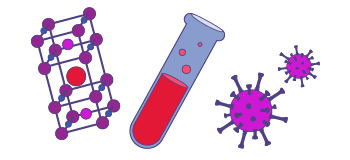The DC Field Facility has the capability to measure low resistances samples in continuous fields up to 45 T. Most of the standard laboratory electronics that users have experience with for lower field measurements are available at the MagLab, including lock-in amplifiers, current sources and pre-amplifiers.
Several magnets that are part of the user program — SCM1 and SCM2, Cells 9, 12 and 15 — have cryogenic systems installed with probes that conveniently allow for “plug and play” measurements using 8- and 16-pin connectors. Many users choose to mount samples on these platforms at their home institutions so they are prepared when they arrive at the MagLab. The direction of the applied field of the magnets can be reversed for Hall effect measurements and rotation probes are available for determining the angular dependence of the magnetoresistance.
Resistive Magnets
Superconducting Magnets
Hybrid Magnets

Explore our magnet schedule to see what exciting research is happening on our stellar fleet of instruments right now.
C. Liu et al., Observation of an antiferromagnetic quantum critical point in high-purity LaNiO3, Nature Communications, 11, 1402 (2020) Read online.
C. Zhang et al., Quantum Hall effect based on Weyl orbits in Cd3As2, Nature, 65, 331-336 (2019) Read online.
A.F. Gubkin et al., Field-induced magnetic phase transitions and metastable states in Tb3Ni, Physical Review B, 97, 134425 (2018) Read online.
J. Murphy, et al., Angular-dependent upper critical field of overdoped Ba(Fe1−xNix)2As2, Phys. Rev. B (2013) Read online.
K. Wang, et al.,Two-dimensional Dirac fermions and quantum magnetoresistance in CaMnBi2, Phys. Rev. B - Rapid Comm. 85(2012) Read online.
K. Wang, et al., Quantum transport of two-dimensional Dirac fermions in SrMnBi2, Phys. Rev. B – Rapid Comm. 84 (2011) Read online.
For more information, please contact:
Last modified on 13 December 2023